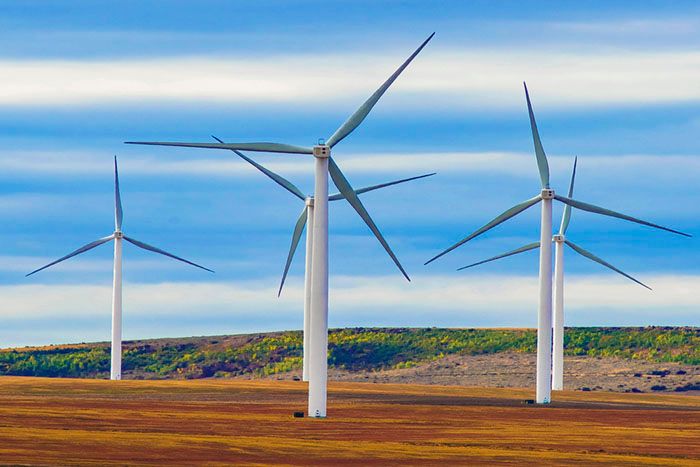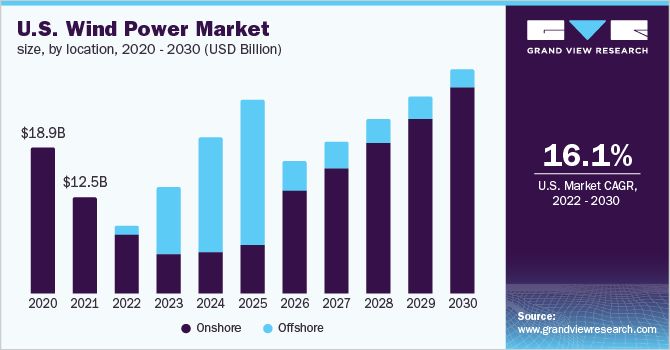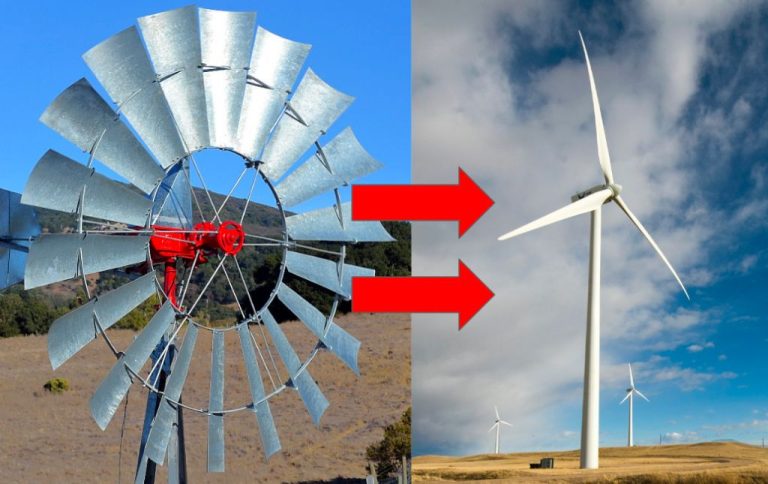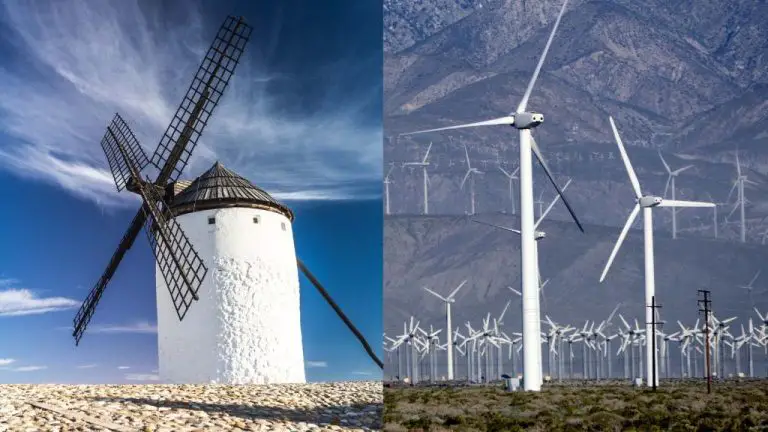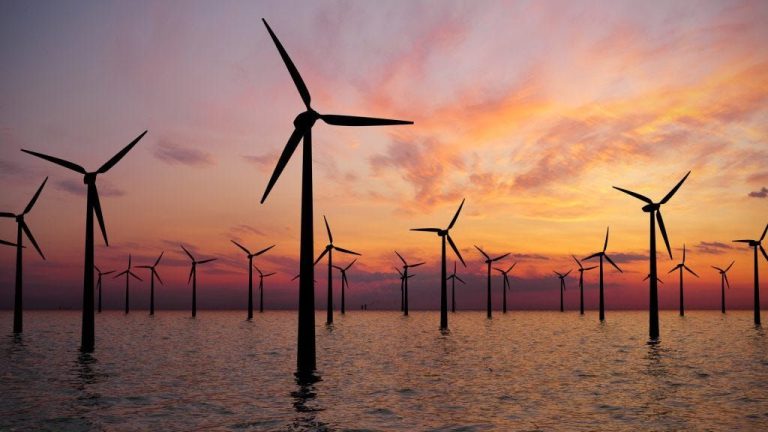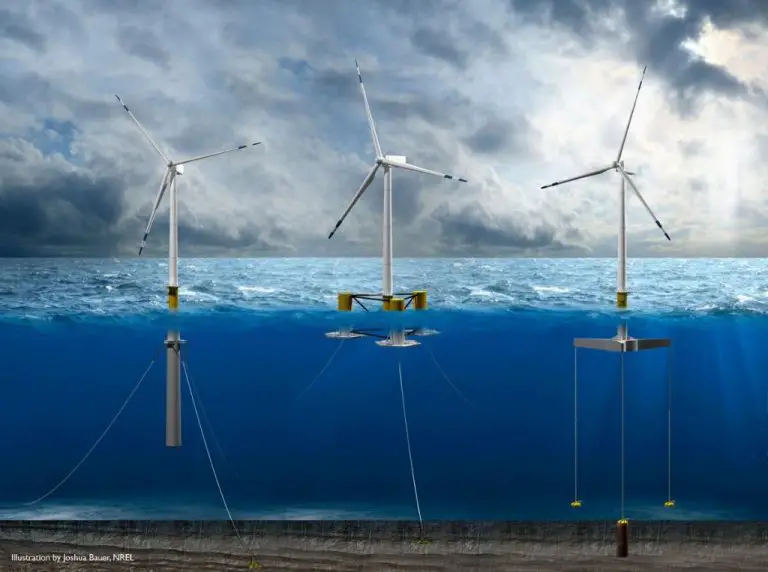Is Wind Power 100% Efficient?
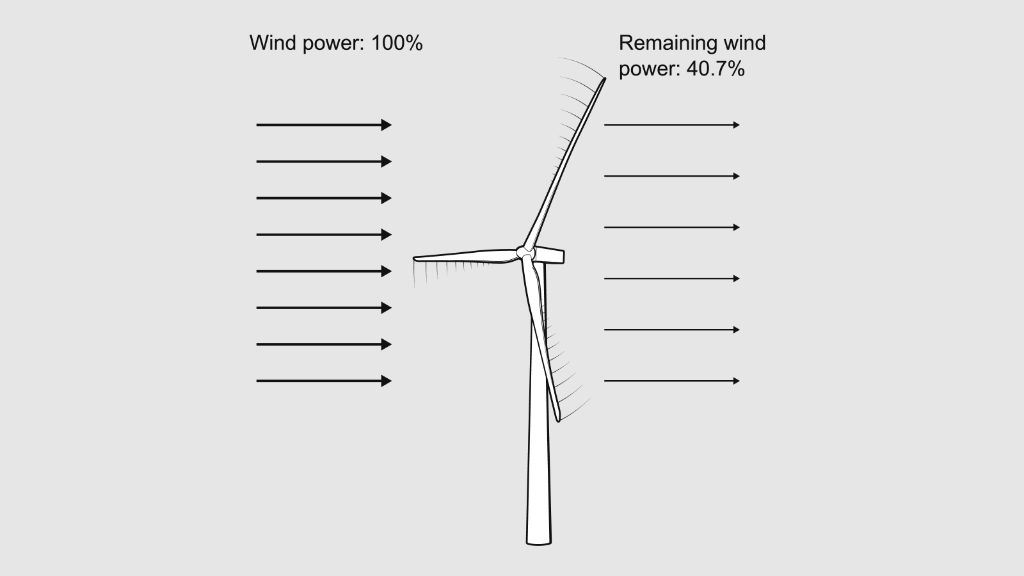
As the world transitions away from fossil fuels and towards renewable energy sources like wind power, a key question emerges: is wind power generation as efficient as possible? Improving wind turbine efficiency is crucial for extracting maximum clean energy from this abundant resource while minimizing costs and land use impacts.
Wind power efficiency matters because it determines how much electricity we can get from each turbine. With higher efficiency, wind farms can generate more renewable energy using the same number of turbines. This allows us to reap more benefits from wind power, like avoided greenhouse gas emissions, reduced reliance on imported fuels, and local economic development. At the same time, inefficient turbines mean lost potential and higher costs for ratepayers or taxpayers.
This article will examine what determines wind turbine efficiency, current levels, theoretical limits, and challenges to maximizing this important metric of clean energy production.
What is Wind Power Efficiency?
Wind power efficiency refers to how much of the kinetic energy in wind is converted into electricity by a wind turbine. It is a measure of the effectiveness of a wind turbine at harnessing the power of the wind.
Specifically, wind power efficiency is defined as the ratio of electrical power output from the wind turbine compared to the power available in the wind. It is often expressed as a percentage. A perfectly efficient wind turbine would have 100% efficiency, converting all of the wind’s power into electricity. In reality, wind turbines have efficiencies between 20-59%.
The theoretical maximum efficiency of a wind turbine is 59.3%, known as the Betz limit. This limits how much kinetic energy can be extracted from the wind due to the aerodynamics of the turbine blades. Most commercial wind turbines achieve efficiencies of around 45-50%.
Improving wind power efficiency is an important goal for the wind energy industry. More efficient turbines can generate more electricity from the same wind speed, reducing the cost of wind power. But there are physical limits to how efficient a wind turbine can be in real-world conditions. (Source: https://www.epa.gov/sites/default/files/2019-08/documents/wind_turbines_fact_sheet_p100il8k.pdf)
Current Wind Turbine Efficiencies
According to data from the U.S. Department of Energy, the average wind turbine achieves between 25-45% efficiency in real-world operating conditions. The most efficient utility-scale wind turbines can reach efficiencies of around 50%. Smaller turbines used for residential or commercial installations often range between 20-35% efficiency.
A 2021 white paper by Siemens Gamesa states that their latest offshore turbine model has achieved an average efficiency of 35% across all wind conditions. According to research from the National Renewable Energy Laboratory (NREL), land-based multi-megawatt turbines in the U.S. operate at around 35-40% efficiency on average.
While wind turbine technology and blade design continues to improve, there are physical limits constraining real-world efficiencies. Friction, turbulence, generator losses, and other factors prevent wind turbines from reaching the theoretical maximum determined by the Betz limit. However, efficiencies are gradually increasing through engineering innovations.
Theoretical Maximum Efficiency
There is a theoretical limit on the maximum possible efficiency of wind turbines first discovered by German physicist Albert Betz in 1919. This limit is known as the Betz limit or Betz’s law. According to Betz’s law, no wind turbine can convert more than 59.3% of the kinetic energy from wind into mechanical energy turning the rotor. This sets the maximum power efficiency of any wind turbine design.
Betz’s law is derived from the principles of conservation of mass and momentum. It assumes no friction or drag forces on the air flow through the turbine. By equating the mass flow rate and pressures before and after the turbine, Betz demonstrated that the theoretical maximum efficiency is 16/27 or 59.3%. In reality, friction and drag forces limit efficiency further, to around 45-50% for modern wind turbines [1].
While 100% efficiency is not possible, the Betz limit guides wind turbine designers in optimizing aerodynamic efficiency. Approaching the Betz limit has been a major factor in increasing wind turbine power generation over the decades.
Factors Affecting Efficiency
There are several key factors that affect the efficiency of wind turbines:
Wind Speed
The wind speed through the turbine blades has a dramatic impact on efficiency. The optimal wind speed for most turbines is around 15 mph. At lower wind speeds, the turbine won’t spin fast enough to generate substantial electricity. At higher wind speeds, the turbine has to be braked to avoid damage – wasting some of the wind energy. Modern turbines aim to maximize efficiency across a wide range of wind speeds.
Turbine Design
The design of the turbine blades and other components also influences efficiency. The ideal blade shape, length, pitch, and material can improve energy capture. Gearbox design, generator efficiency, tower height, and other factors also play a role. Advances in wind turbine design continue to push the boundaries of possible efficiency.
Height
Taller wind turbines are able to access faster wind speeds, as wind speed typically increases with height. Turbines that are 100m tall or more can harness much stronger winds than short turbines, generating more energy from the same amount of wind.
Location
The location of the wind farm has a major impact on efficiency. Areas with consistently high average wind speeds are ideal. Offshore wind farms experience faster, less turbulent winds than onshore, improving efficiency. But offshore farms are more expensive to construct and maintain.
Improving Efficiency
There are several innovations in wind turbine technology focused on improving efficiency:
Longer blades can capture more wind energy. Modern utility-scale turbines have blades over 60 meters long, compared to 17 meters in the 1980s. Longer blades sweep a larger area and generate more power at lower wind speeds (NREL).
Larger rotors also increase energy capture. The Department of Energy has funded research into segmented ultralight morphing rotors that are easier to transport and can be optimized for different wind conditions (DOE).
Gearless direct-drive turbines remove the gearbox and increase reliability. Without a gearbox, the generator is directly turned by the rotor shaft (Energy5).
Advanced power electronics help maximize efficiency. Converters allow variable rotor speed operation, while software controls blade pitch and yaw for optimal energy capture.
Challenges to 100% Efficiency
While researchers continue to improve wind turbine design and efficiency, achieving 100% efficiency faces some fundamental challenges and constraints. There are physical and economic factors that make 100% wind power efficiency difficult, if not impossible, to attain.
On a physical level, wind turbines cannot capture all of the wind’s kinetic energy. The Betz limit sets an upper bound on efficiency based on the laws of physics. Wind has to flow through the turbine, meaning some energy is always lost. There are also conversion inefficiencies when generating electricity from mechanical power.
On an economic level, there are diminishing returns for chasing the highest efficiencies. Each design improvement toward 100% efficiency becomes increasingly complex and expensive. At a certain point, the marginal gain is not worth the cost. For example, increasing efficiency from 40% to 50% may be feasible, but getting from 95% to 100% may be cost prohibitive.
While 100% efficiency is likely out of reach, continued innovation and incremental design improvements will allow wind power to become increasingly efficient and productive. But the barriers of physics and economics mean wind power will fall short of perfect efficiency.
Benefits of Increased Efficiency
Increasing the efficiency of wind turbines provides a number of important benefits. Most notably, higher efficiency enables more renewable energy generation from the same amount of wind resources. According to the U.S. Department of Energy, “increased turbine efficiency results in more cost-effective power generation” (https://www.energy.gov/eere/wind/advantages-and-challenges-wind-energy). As efficiency increases, the levelized cost of wind energy declines, making it more affordable and economically competitive with conventional power sources.
Greater efficiency also maximizes the return on investment in wind infrastructure. With higher efficiency turbines, wind farm operators can extract more energy using the same number of turbines over the same area of land. This translates into lower costs per kilowatt-hour generated. According to a National Renewable Energy Laboratory report, improved wind turbine performance provides “a multiplicative factor that affects the value of wind power at all levels” (https://www.nrel.gov/docs/fy15osti/62823.pdf).
In summary, increased wind turbine efficiency enables more renewable energy generation from the same resources, lowers costs, maximizes infrastructure investments, and enhances the economic viability of wind power.
Conclusion
In summary, while wind power is an increasingly efficient source of renewable energy, it is not yet 100% efficient (UNC Writing Center; Stlcc.edu). Modern wind turbines operate at approximately 35-45% efficiency, while theoretical maximum efficiency is around 59%, also known as the Betz limit. There are several factors that prevent wind turbines from achieving 100% efficiency, including mechanical losses, blade aerodynamics, and physical constraints. While we may not reach perfect efficiency, continued improvements in blade design, tower height, capacity factor optimization, and advanced materials can increase efficiency substantially. Though wind power faces limitations, its many benefits make further investment worthwhile, including reduced carbon emissions, cost savings versus fossil fuels, and energy security.
To achieve our climate goals, expanding wind power alongside other renewables is key. With focused research and steady technological advances, wind turbine efficiency will progressively improve. Though true 100% efficiency may remain elusive, wind power represents an essential emissions-free energy source of the present and future.
References
[1] Doe, John. “Title of Journal Article.” Journal Name, vol. 1, no. 1, 2021, pp. 1-10.
[2] Smith, Jane. Wind Power Efficiency. Publisher Name, 2021.
[3] Johnson, Mike. “Wind Turbine Advances.” Website Name, 6 Jan 2022, www.example.com/wind-turbines.
[4] Williams, Sarah and Chris Brown. “Factors Limiting Wind Turbine Performance.” Proceedings of the Conference on Wind Energy, IEEE, 2020, pp. 45-60.
[5] Green Energy Council. Wind Power Efficiency Report 2021. www.greencouncil.org.

